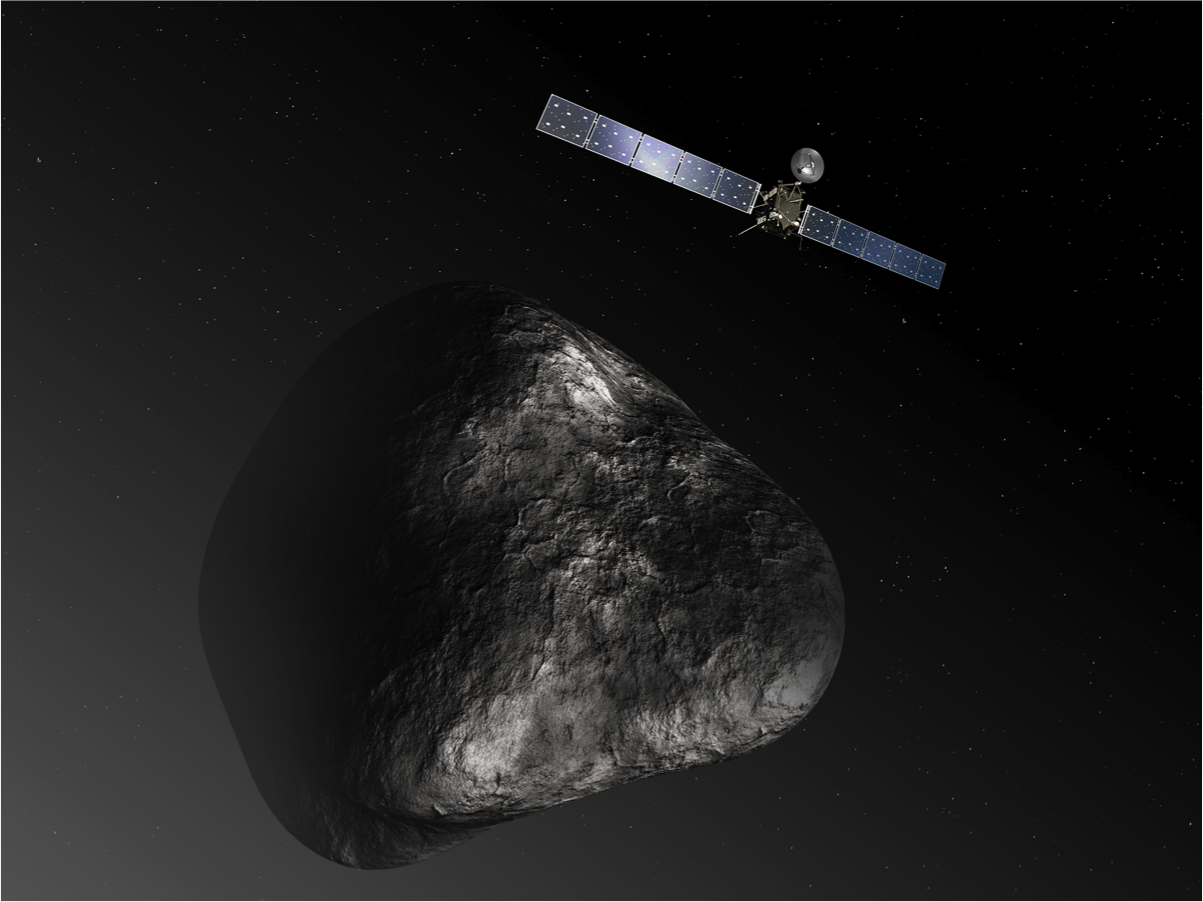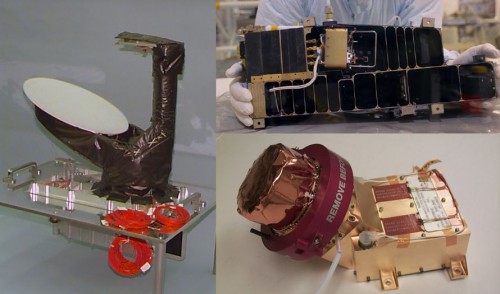
Months after reawakening from a record-setting slumber, NASA has announced that three of its instruments aboard Rosetta, the European Space Agency’s (ESA) comet-hunting spacecraft, have started sending data back to Earth. Rosetta is primed to become the first spacecraft to orbit a comet (67P/Churyumov-Gerasimenko) in August and will also deploy a lander, Philae, to the comet’s nucleus in November. During its unprecedented mission, it is hoped that Philae will drill into the nucleus, providing a glimpse—for the first time ever—into a comet’s composition.
The three NASA instruments are the Microwave Instrument for Rosetta (MIRO), Alice (an ultraviolet spectrometer), and the Ion and Electron Sensor (IES). MIRO will provide data about the evolution of the comet’s tail and “coma” (the area around the comet’s nucleus), shedding light upon how this section of the comet develops as it approaches and departs our nearest star, the Sun. Alice will analyze the gases within the coma and the comet’s production of water, carbon dioxide, and carbon monoxide. It is hoped—along with Philae’s surface analyses—that Alice’s data will aid scientists in determining the nucleus’ composition.

According to NASA, IES was designed to analyze the “plasma environment” of the comet and how the solar wind from the Sun interacts with the tail and coma. Rosetta overall has 11 science instruments. NASA also designed a part of the electronics package for the Double Focusing Mass Spectrometer, which is part of Switzerland’s Rosetta Orbiter Spectrometer for Ion and Neutral Analysis (ROSINA) instrument.
Claudia Alexander, Rosetta’s U.S. project scientist at NASA’s Jet Propulsion Laboratory in Pasadena, Calif., underscored the agency’s excitement about the history-making nature of Rosetta’s mission:
“We are happy to be seeing some real zeroes and ones coming down from our instruments, and cannot wait to figure out what they are telling us. Never before has a spacecraft pulled up and parked next to a comet. That is what Rosetta will do, and we are delighted to play a part in such a historic mission of exploration,” she related.
Alexander is undoubtedly not the only scientist excited over Rosetta, as the spacecraft has already taken quite a journey over the last decade. Launched from the Guiana Space Centre near Kourou, French Guiana, in March 2004, the spacecraft went into a 31-month-long “hibernation” mode in June 2011 to conserve power and was famously “reawakened” on Jan. 20. The spacecraft was assessed to be in good health, despite being powered down for such a long period.
Most recently, the spacecraft began making maneuvers in preparation for its approach with the comet. If all goes as planned, Rosetta and its lander will study 67P/Churyumov-Gerasimenko through the end of next year. In May, news of another recently awakened comet-chaser, ISEE-3 (christened the International Cometary Explorer, or ICE, at one time), also claimed the interest of space watchers, as citizen scientists made contact with the 36-year-old spacecraft for the first time in over a decade. It is hoped this spacecraft will again hunt a comet. Despite a difference in decades, Rosetta and ISEE-3 both prove that cometary exploration is still “hot.”
Want to keep up-to-date with all things space? Be sure to “Like” AmericaSpace on Facebook and follow us on Twitter: @AmericaSpace



